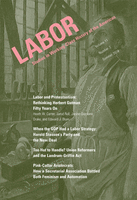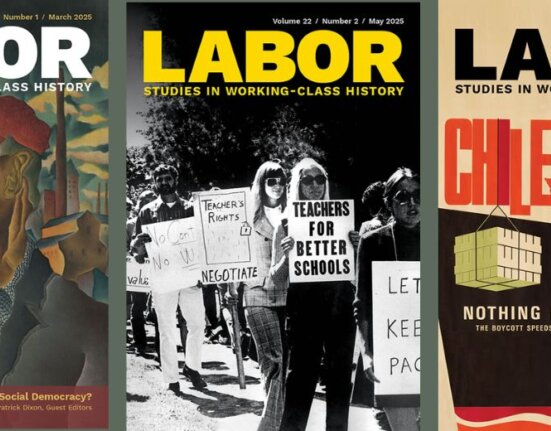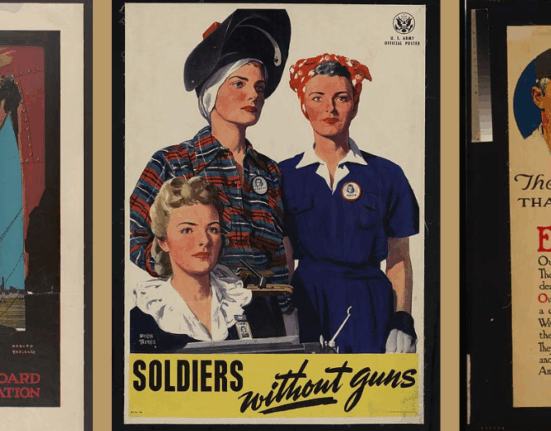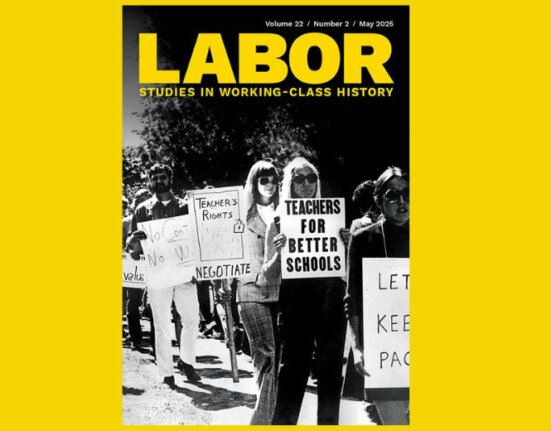In This Issue
Articles
- Kristoffer Smemo, “A “New Dealized” Grand Old Party: Labor and the Emergence of Liberal Republicanism in Minneapolis, 1937 – 1939”
In the late 1930s, in Minneapolis and across the urban-industrial North, a cohort of self-described liberal Republicans helped reverse almost a decade’s worth of defeats for the Grand Old Party. Liberal Republicans accepted the political reality of a society responsible for the welfare of its individual citizens but rejected the class-based notion of affirmative rights to security and equality that was central to the New Deal. Under Governor Harold Stassen, this “New Dealized” wing of the Republican Party made its most important contributions in the arena of labor relations. Though liberal Republicans applauded trade unionism in principle, Stassen won office by pledging to restrict workers’ ability to strike and ridiculing labor’s program of social reform as a threat to economic recovery. The Minnesota Labor Relations Act, which swept through the state legislature in 1939, encapsulated Stassen’s conservative statism whereby Republican policy makers adopted the statecraft of the New Deal precisely to thwart the working-class forces energized by New Deal legislation. Furthermore, the legwork of the Minnesota Republican US Congressional delegation made Stassen’s labor relations act a template for the Labor Management Relations Act of 1947, commonly known as the Taft-Hartley act. By delegitimizing strike activity in law and political discourse, New Dealized Republicanism set the foundation for a system that gutted a more expansive working-class politics and confined unions within a highly vulnerable and isolated collective bargaining regime.
- Joseph E. Hower, “Big Brother Unionism? The Landrum-Griffin Act and the Fight for AFSCME’s Future, 1961 – 1964”
In this article, Joseph Hower examines the regulation of union elections by the Labor-Management Reporting and Disclosure Act (commonly known as the Landrum-Griffin act) through a case study of the American Federation of State, County, and Municipal Employees (AFSCME). Drawing on local and national union records and oral history transcripts, he reconstructs Jerry Wurf’s campaign for the union presidency (1961–64) and shows how Wurf and his dissident caucus were reluctant to invoke Landrum-Griffin’s protections, even in the midst of a fiercely contested election campaign, for fear that it would legitimize the anti-union intentions of the law’s architects. Instead, Wurf and the other dissidents turned the law to their own ends, holding out the threat of legal action to force incumbent president Arnold Zander to curb his worst excesses, while using his administration’s misdeeds to underscore their broader case for union reform. Narrowly defeated in 1962, Wurf managed to unseat Zander at the union’s 1964 convention. The successful challenge, a rarity in twentieth-century labor history, ratified a more militant vision of the union, setting the stage for AFSCME’s impressive growth during the second half of the twentieth century.
- Katherine Turk, “Labor’s Pink-Collar Aristocracy: The National Secretaries Association’s Encounters with Feminism in the Age of Automation”
Starting in the mid-twentieth century, secretaries responded to the pressures of automation and feminism with a range of strategies. The members of the National Secretaries Association (NSA), a national network of thousands of secretaries who defined themselves against both women’s liberationists and less skilled women office workers, saw their occupation as a separate-but-equal role for women in the business world and thought of themselves as members of a labor aristocracy. They insulated themselves just beneath the glass ceiling, working throughout the 1960s and 1970s to boost their status at work through the prism of gendered, classed respectability rather than equality or collective rights. Yet while NSA members initially kept the feminist movement at arm’s length, employer-driven automation eventually compelled them to adopt some of its elements. By the 1990s, in response to the proliferation of desktop computers in office work, the NSA had reinvented itself as an association of office managers and technology specialists, arguing that the same machines that had deskilled, outsourced, and eliminated many women office workers’ jobs would liberate secretaries from the drudgery assigned to them by outdated sex stereotypes. In the end, clerical workers were not simply replaced by machines, and some skilled secretaries obtained office manager jobs. However, the glass ceiling persisted even as professional positions were nominally opened up to women; office support jobs retained their low pay, monotony, and inflexibility; and automation continued to sharpen the class divide in office work.
The Common Verse
- William Boggs, “With No Direction Home“
LAWCHA Watch
- Lisa Levenstein, “Fighting for a State’s Future: Organizing Scholars to Speak Out”
Up for Debate
- Leon Fink, “Introduction”
In this section, four accomplished historians revisit Herbert Gutman’s famous essay, “Protestantism and the American Labor Movement.” While paying tribute to Gutman’s path-breaking insights, each contributor also highlights recent work that has effectively transformed the borderlands between labor and religious history. Whereas Gutman viewed religion as a vestigial category, an inherited set of traditions that workers could adapt to their own purposes, Heath Carter discusses ongoing class contestations in the pews and pulpits of Gilded Age Chicago. Although Gutman followed the scholarship of his day in assuming a diminution of religious-based radicalism in northern industrial centers after 1900, Jarod Roll shows the opposite dynamic in the American South. Even in the North, as Janine Giordano Drake emphasizes, a radical, Jesus-based Christianity was an important ideological prop for the Socialist Party of America. In conclusion, Edward Blum ponders the questions of how the labor movement reinterpreted a classic biblical curse and why historians failed to notice.
- Heath W. Carter, “Labor and the Politics of the Church“
- Janine Giordano Drake, “The Proletarian Jesus in the Shaping of the Socialist Party of America, 1880–1919“
- Jarod Roll, “The Christian Spirit beyond the Gilded Age“
- Edward J. Blum, ““By the Sweat of Your Brow”: The Knights of Labor, the Book of Genesis, and the Christian Spirit of the Gilded Age“






